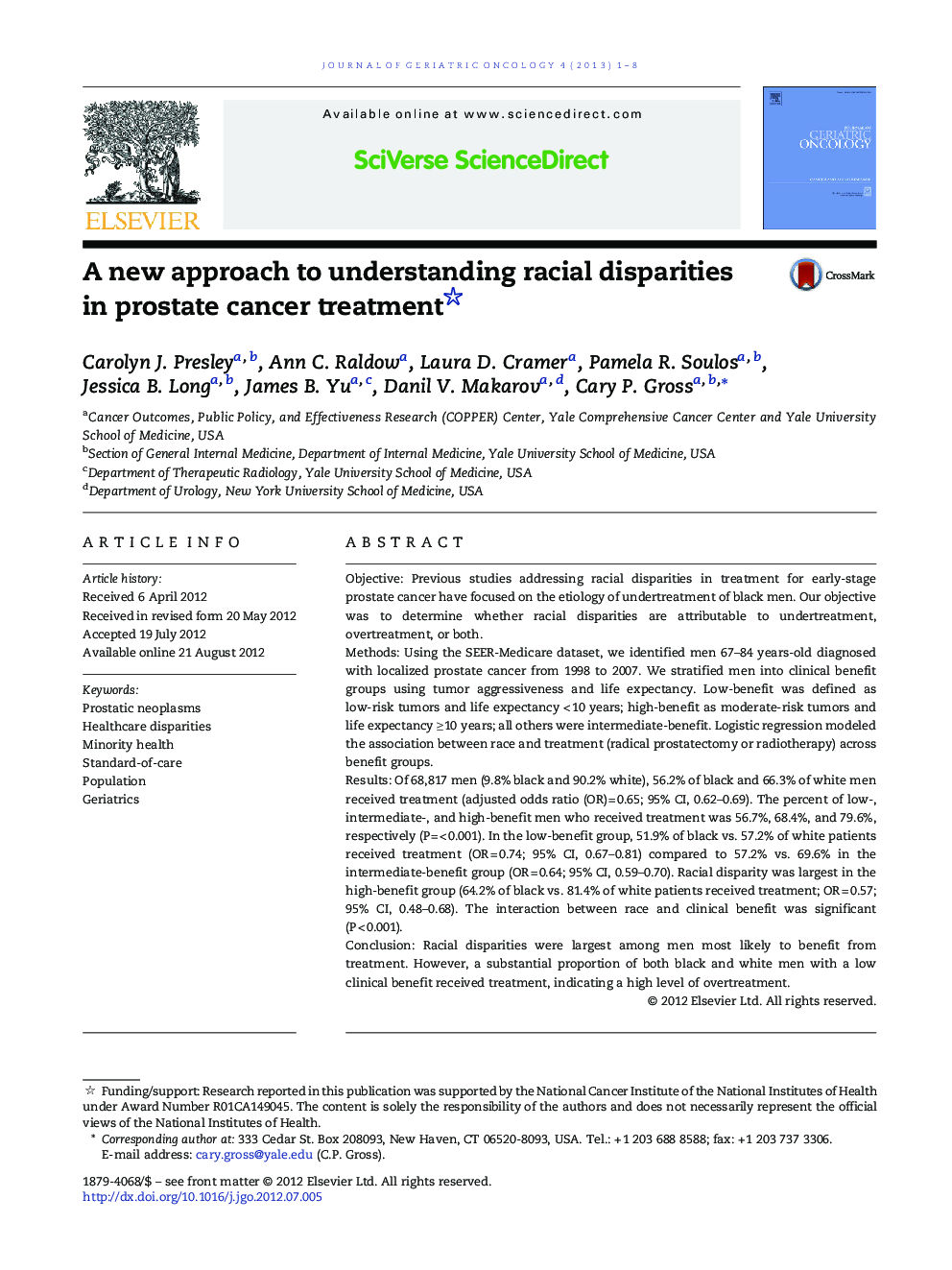| کد مقاله | کد نشریه | سال انتشار | مقاله انگلیسی | نسخه تمام متن |
|---|---|---|---|---|
| 1912896 | 1047197 | 2013 | 8 صفحه PDF | دانلود رایگان |

Objective:Previous studies addressing racial disparities in treatment for early-stage prostate cancer have focused on the etiology of undertreatment of black men. Our objective was to determine whether racial disparities are attributable to undertreatment, overtreatment, or both.Methods:Using the SEER-Medicare dataset, we identified men 67–84 years-old diagnosed with localized prostate cancer from 1998 to 2007. We stratified men into clinical benefit groups using tumor aggressiveness and life expectancy. Low-benefit was defined as low-risk tumors and life expectancy < 10 years; high-benefit as moderate-risk tumors and life expectancy ≥ 10 years; all others were intermediate-benefit. Logistic regression modeled the association between race and treatment (radical prostatectomy or radiotherapy) across benefit groups.Results:Of 68,817 men (9.8% black and 90.2% white), 56.2% of black and 66.3% of white men received treatment (adjusted odds ratio (OR) = 0.65; 95% CI, 0.62–0.69). The percent of low-, intermediate-, and high-benefit men who received treatment was 56.7%, 68.4%, and 79.6%, respectively (P = < 0.001). In the low-benefit group, 51.9% of black vs. 57.2% of white patients received treatment (OR = 0.74; 95% CI, 0.67–0.81) compared to 57.2% vs. 69.6% in the intermediate-benefit group (OR = 0.64; 95% CI, 0.59–0.70). Racial disparity was largest in the high-benefit group (64.2% of black vs. 81.4% of white patients received treatment; OR = 0.57; 95% CI, 0.48–0.68). The interaction between race and clinical benefit was significant (P < 0.001).Conclusion:Racial disparities were largest among men most likely to benefit from treatment. However, a substantial proportion of both black and white men with a low clinical benefit received treatment, indicating a high level of overtreatment.
Journal: Journal of Geriatric Oncology - Volume 4, Issue 1, January 2013, Pages 1–8